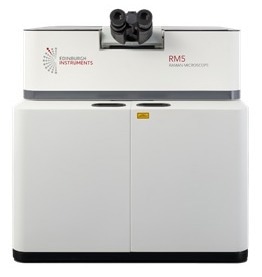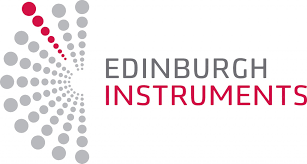Carbon nanotube architectures are used in numerous technologies because of their unique attributes.
Raman spectroscopy can analyze a variety of carbon nanotube attributes, including tube diameter, strain, and defects.
Angle-resolved polarized Raman microscopy can be utilized to establish the axis orientation and relative alignment of carbon nanotube architectures.
Introduction
Carbon nanotubes (CNTs) are cylindrical structures containing single or multiple graphene layers with an intriguing collection of attributes, including mechanical, electronic, thermal, and optical properties.1
The majority of products containing CNTs comprise bulk powders with unorganized CNTs. These include electrodes, automotive parts, batteries, bicycle frames, and water filters.
There is increased interest in organized CNT architectures. Vertically aligned forests and horizontally aligned sheets could potentially upscale the desirable attributes of individual CNTs. Aligned CNT architectures could benefit multiple settings, including photovoltaics and microelectronics.
The defined attributes of photoluminescence and Raman can reveal valuable data during the fabrication of CNT architectures, which includes structural defects, chirality, and the orientation and degree of alignment.
This article demonstrates how the alignment of CNT architectures can be examined with angle-resolved polarized Raman microscopy utilizing the Edinburgh Instruments RM5 Raman Microscope.
Materials and Methods
Horizontal CNT sheets were constructed on a 4-inch silicon (Si) wafer. Raman measurements were executed on an RM5 equipped with a vertically polarized 532 nm laser, an 1800 gr/mm grating, and changeable horizontal and vertical analyzers in the scatter path as shown in Figure 1. Placing the wafer on a rotational stage, attached to the main X, Y, Z-mapping stage, allowed a 360° rotation of the wafer for angle-resolved polarized Raman microscopy.

Figure 1. Edinburgh Instruments RM5 Raman Microscope. Image Credit: Edinburgh Instruments Ltd.
Raman Spectrum of Carbon Nanotubes
The identification of CNTs in a sample is possible due to their characteristic Raman spectrum. Their specific and unique features allow differentiation from other carbon allotropes like graphene, shown in Figure 2.2
An important feature in the Raman spectrum is the G band. The G band is centered at ca. 1580 cm-1 and is an example of the in-plane stretching of C-C bonds. The G band in CNTs, as demonstrated in Figure 2, is split into two separate bands located at 1572 cm-1 and 1592 cm-1, and they are denoted G+ and G-.
This happened from the strain induced by the curvature of the material, causing splitting in the vibrational energies of the orthogonal modes and the tubular axis.2 This contrasts with the G band of pristine graphene with a single peak.
Another feature in the CNT Raman spectrum is the radial breathing mode (RBM), which is determined for an out-of-plane stretching vibration where all carbon atoms in the cylindrical structure oscillate together in the radial direction.3
The frequency of this mode is an inverse variation to the diameter of the CNTs, varying between 100 cm-1 and 500 cm-1. The sample analyzed in Figure 2 demonstrates that the RBM can be found at 173 cm-1.
The additional two bands highlighted in the CNTs are the D and G’ (often denoted 2D) bands at 1344 cm-1 and 2670 cm-1, which provide essential data on the structural features and disorder in the CNTs. These bands can be found in the spectrum of graphene and are thoroughly explained in the article.

Figure 2. Raman spectrum of CNTs. Image Credit: Edinburgh Instruments Ltd.
Angle-Resolved Polarized Raman Microscopy of Carbon Nanotubes
Conventional Raman spectroscopy can be utilized to describe the various structural attributes of CNTs. However, determining the direction of aligned CNT architectures involves angle-resolved polarization of incident and analyzed light.4
The Raman scattering cross-section of a CNT is very anisotropic. This means the Raman scattering increased during the alignment across the tubular axis of the incident and analyzed polarizations. They are decreased when the polarizations are orthogonal to the tubular axis. If CNTs are very ordered and aligned, the polarization angles where the Raman scattering is increased will correlate with their axis of orientation.
Angle-resolved polarized Raman microscopy can be accomplished utilizing a variety of configurations. One option is to fix the excitation, analyze polarization inside the microscope, and then rotate the sample around the Z axis by an angle denoted ϴ, as shown in Figure 3. In Raman microscopy, the X and Y-planes on the sample match the horizontal and vertical polarization orientations, respectively.
The vertical polarization of the internal 532 nm laser was utilized, and the analyzer in the RM5 was set to discover vertically polarized Raman scattering. The CNT sample was set on the rotational mount and repeatedly adjusted by 10°. The polarized Raman spectrum was documented at the same point on the sample at each step between 0° and 360°.

Figure 3. Experimental setup for angle-resolved polarised Raman microscopy. The orientation reference frames prior to and after sample rotation are shown in blue and black, respectively. Image Credit: Edinburgh Instruments Ltd.
The Raman intensity of the G+ band at 1592 cm-1 at each angle was plotted at polar coordinates, revealing the direction of the CNTs, demonstrated in Figure 4A.
The blue squares are the recorded intensities. The red line utilized a Fourier curve to fit the data. The bipolar nature of the fit demonstrates the alignment of CNTs along a single axis. The two poles of the fit at ca. 105° and 285° based on the vertical polarization plane show the direction that the aligned tubular axes of the CNTs are oriented.
The angle-resolved polarized Raman data was confirmed using atomic force microscopy (AFM). Figure 4B shows that the CNTs are aligned along the same axis.

Figure 4. A) Polar plot of the CNT G+ Raman intensity at 1592 cm-1 and B) AFM image of CNTs. Image Credit: Edinburgh Instruments Ltd.
Conclusion
The Raman spectroscopy can examine multiple properties of CNTs. This includes strain, tube diameter, defects, and orientation. The Edinburgh Instruments RM5, equipped with polarization optics and a rotational stage, can perform angle-resolved polarized Raman microscopy, determining the relative alignment and orientational axis of a CNT sheet structure.
References and Further Reading
- M. F. L. De Volder et al., Carbon Nanotubes: Present and Future Commercial Applications, Science, 2013, 339, 535-539.
- A. Jorio et al., Raman spectroscopy for carbon nanotube applications, J. Appl. Phys., 2021, 129, 021102.
- M. S. Dresselhaus et al., Raman spectroscopy of carbon nanotubes, Phys. Rep., 2005, 409, 47-99.
- X. Yang et al., Polarized Raman Study of Aligned Multiwalled Carbon Nanotubes under High Pressure, J. Phys. Chem. C, 2015, 119, 27759-27767.

This information has been sourced, reviewed and adapted from materials provided by Edinburgh Instruments.
For more information on this source, please visit Edinburgh Instruments.